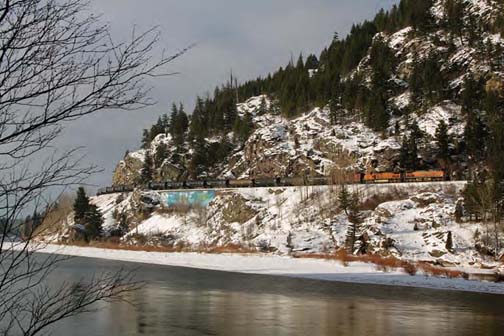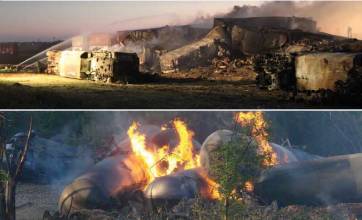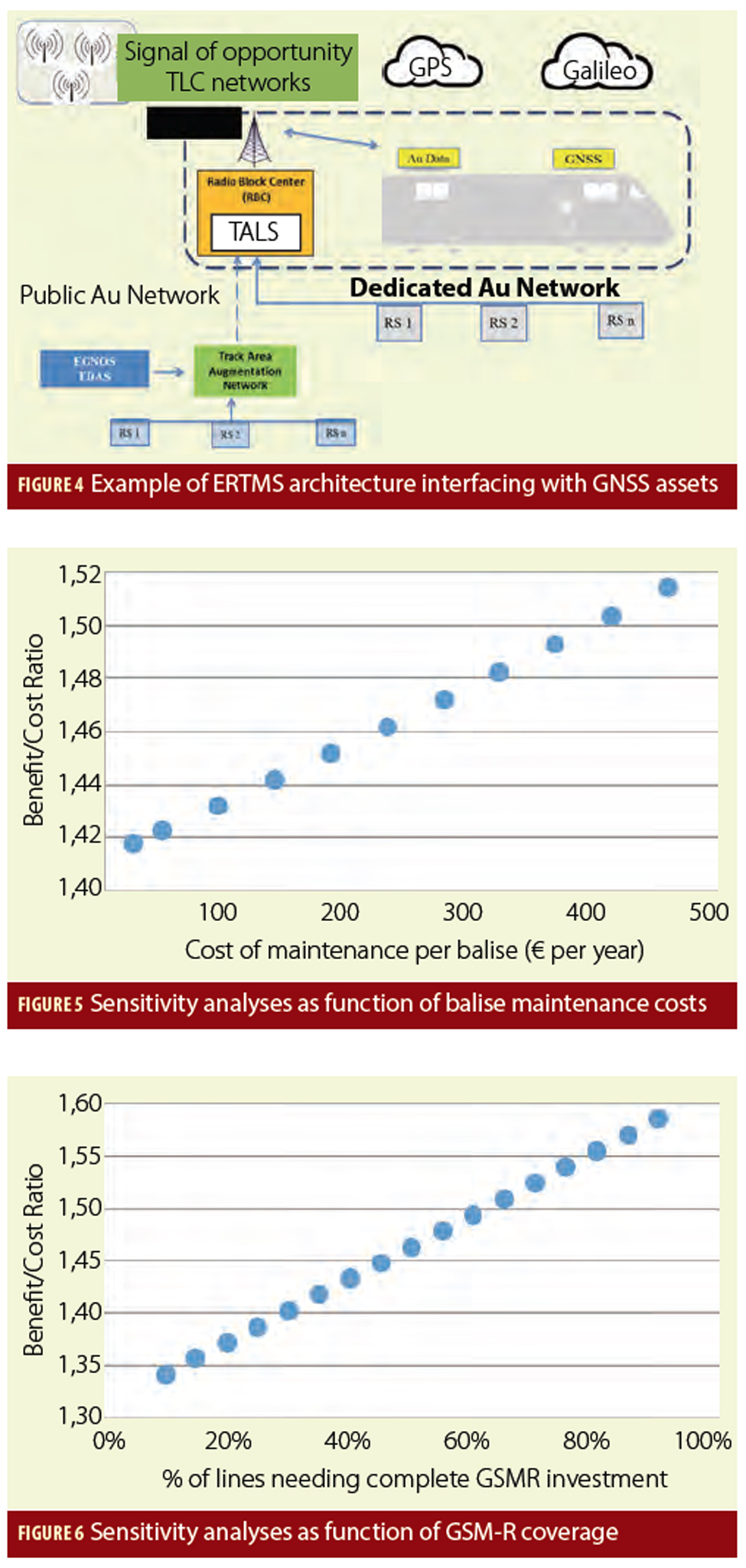When the President signed a three-week extension — until Friday (November 20, 2015) — of federal transportation funding, he also gave railroads another three years to install positive train control or PTC on their locomotives and rail networks.
Rail operators now have until 2018 to upgrade their systems — plus another two years to actually get them working.
When the President signed a three-week extension — until Friday (November 20, 2015) — of federal transportation funding, he also gave railroads another three years to install positive train control or PTC on their locomotives and rail networks.
Rail operators now have until 2018 to upgrade their systems — plus another two years to actually get them working.
PTC is a key safety improvement that uses GPS and a host of other technologies to prevent the kind of accidents most typically caused by human error. Five years ago Congress mandated that PTC be installed by the end of this year on “mainline” Class 1 railroads.
The mandate covered rail systems used by commuters and inter-city passengers and on any rail line that transported any amount of a hazardous substance that could cause harm if inhaled. That amounted to some 40 railways, most with a host of tenants that use their tracks.
Failure to comply with the deadline carried hefty fines for laggards — in some cases as much as $25,000 per day per violation, according to the June testimony of Sarah Feinberg, acting administrator of the Federal Railroad Administration (FRA) before the House Subcommittee on Transportation and Infrastructure Subcommittee on Railroads, Pipelines, and Hazardous Materials.
PTC is not a new idea. The National Transportation Safety Board has included positive train control on its “Most Wanted List” every year since 1990. Burlington Northern (now Burlington Northern Santa Fe, or BNSF) demonstrated its Advanced Railroad Electronics System (ARES) PTC system on 250 miles of BN track in the Mesabi Iron Range from 1987 to 1992.
The Rail Safety Improvement Act of 2008 (RSIA) mandated that PTC be implemented on so-called Class I rail tracks by the end of this year. Nearly everyone now agrees, however, that the deadline was unrealistic.
Causes for Failure
Both the rail companies and the FRA had been signaling for years that installing the system by the end of 2015 was not practical. Even the Government Accountability Office (GAO) concurred, recommending in August 2013 that Congress “consider granting FRA the authority to extend the deadline on certain rail lines on a case-by-case basis, grant provisional certification of PTC systems, and approve the use of alternative safety technologies in lieu of PTC to improve safety.”
Congress approved the deadline extensions in October. The rail companies now have until the end of 2018 to complete installation of the necessary upgrades. The new deadline is consistent with when the railroads told GAO that they believed they could have PTC installed.
“We have indicated that we will have PTC fully installed, that is thousands of locomotives equipped with the technology, thousands of trackside signal systems, the (GPS) satellite system, everything installed, 100 percent, by 2018,” said Ed Greenberg, a spokesman for the Association of American Railroads (AAR).
That does not mean that PTC will be up and running in three years. Congress also allowed rail operators to request, on a case-by-case basis, approval for another two years to test their system.
The industry needs more time to have the system fully operational with reliable communications, said Greenberg.
“Real-world testing and validation,” is necessary he said “to make sure that it’s fully operational — and that will be up to another initial two years.”
The causes for the delays are layered and familiar to anyone following large federally mandated technology projects. While components of PTC were not new in 2008, the overall system was not commercially available and elements had to be developed.
The list of the various technologies comprising a PTC is also quite long.
“In order to implement PTC,” wrote the GAO wrote in a September 2015 report,” railroads must design, produce, and install more than 20 major components, such as data radios for locomotive communication, locomotive management computers, and back office servers.”
Those back-office servers became a particular problem. Only a handful of vendors are able to design PTC systems and provide the software and hardware. Help with system integration and testing was limited as well. Prices in some cases tripled, the industry said, and one smaller railroad reported that it couldn’t get its phone calls returned until a larger railroad intervened.
That intervention was not necessarily altruistic. Rail companies share tracks with some firms hosting the trains of others. Both the tracks and the trains, however, need to be upgraded and those often costly upgrades need to be in sync. The upgrades need to be in place on both sides for the track owner and the train operator to be in compliance and be allowed to work together.
Government contributed to the missed deadline, too. Although Congress had mandated the upgrade to PTC, the FRA did not have sufficient resources to do the necessary oversight. When the GAO evaluated the program in 2013 it found that the agency had just 10 specialists and one supervisor available to review individual rail safety plans that could total 55,000 pages.
FRA officials told GAO examiners this year that 13 staff members now provide technical support to railroads, and the agency planned “to use contractors and temporarily use other FRA staff, if necessary, to assist with PTC-related work, including review of safety plans.”
Federal oversight delays also emerged from unexpected corners, GAO found. One major snag occurred when the Federal Communications Commission (FCC) stepped in to require that the installation of radio wayside poles be halted until the companies were able to complete a review process that included environmental evaluations and notifying tribal authorities. The permitting process interrupted installation for a year, the railroads told GAO.
Five Companies Will Meet Deadline
Even so, not every railroad is going to miss the 2015 deadline. Five organizations told GAO that they expected to meet the deadline for not just installation but implementation: Southeastern Pennsylvania Transportation Authority (SEPTA), Metrolink in Southern California, Caltrain in the San Francisco Peninsula, TriMet in the Portland, Oregon, metro area, and Portland and Western Railroad, which owns 10 of the 15 miles of track on which TriMet operates. Amtrak said in June it expected to meet the original 2015 deadline on the track that it owns in the Northeast Corridor.
The reason for their success may lie in their approach to PTC. Two primary types of positive train control systems are being implemented. Interoperable Electronic Train Management System (I-ETMS), the choice for all the largest operators, relies on GPS signals for train location information and will be installed across some 68,000 miles of rail. The other type of PTC, Advanced Civil Speed Enforcement System (ACSES), uses transponders imbedded in the tracks for train location and is the choice of Amtrak. The commuter services and smaller Class II/III railroads generally run on tracks owned by others and are implementing whatever their host has chosen.
Of the five rail services that expect to meet the 2015 deadline, one is using ACSES and the other three are using another type of positive train control, but not I-ETMS.
“Representatives from one of these (four) railroads specifically mentioned not installing I-ETMS as one reason that they anticipate being able to meet the deadline,” GAO reported.






